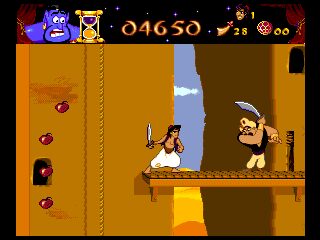Disney's Atlantis: The Lost Empire is an action-adventure game developed by Eurocom and released in 2001 for Game Boy Color. An enhanced version for Game Boy Advance was released later. Based on Disney's animated film, this handheld adaptation attempts to capture the movie's exploration themes and steampunk aesthetic within the constraints of portable hardware, building upon Eurocom's previous experience with Disney's Hercules and Disney's Tarzan.
The Game Boy Color version follows the film's narrative structure, allowing players to control multiple characters, including linguist Milo Thatch, mechanic Audrey Ramirez, and demolitions expert Vinny Santorini, across various mission types. Each character possesses unique abilities that reflect their specializations - Milo can translate ancient texts and solve puzzles, Audrey repairs machinery and accesses restricted areas, while Vinny handles combat situations and explosive obstacles. This character-switching mechanic creates variety that prevents the gameplay from becoming monotonous, similar to the approach used in The Lost Vikings or Trine, while echoing the diverse gameplay styles Eurocom established in their earlier Disney adaptations.
Level design emphasizes exploration and puzzle-solving over pure action, requiring players to investigate environments thoroughly to locate key items, decipher Atlantean symbols, and uncover hidden passages. The underwater city of Atlantis serves as the game's primary setting, with interconnected areas that gradually unlock as players acquire new abilities and tools. This interconnected progression system encourages backtracking and rewards careful observation, though the limited screen real estate of the Game Boy Color can make navigation occasionally confusing.
Combat mechanics remain relatively simple, focusing on timing and positioning rather than complex combos or special moves. Most encounters involve avoiding or defeating the mechanical guardians and crystal creatures that protect Atlantean secrets. The difficulty curve accommodates younger players while providing sufficient challenge for experienced gamers.
The Game Boy Advance version improves upon its predecessor with enhanced graphics that better capture the film's distinctive art style and color palette. Character sprites are larger and more detailed, while backgrounds feature additional layers and improved animation that create a more immersive representation of the underwater civilization. But it's also true that despite the limited screen resolution and color palette, the Game Boy Color version has a kind of vintage pixel art that is very fascinating and more "steampunk" than the GBA version.
Audio presentation differs considerably between versions, with the Game Boy Color relying on simple melodies that adequately convey the adventure atmosphere, while the Game Boy Advance benefits from higher-quality samples and more elaborate musical arrangements that better reflect the film score. Sound effects in both versions provide satisfactory feedback for actions and environmental interactions.
The most significant gameplay difference between versions lies in the expanded content available on Game Boy Advance. Additional levels, side quests, and character interactions flesh out the story beyond the basic film adaptation, providing more substantial gameplay that justifies the platform's capabilities.
Both versions succeed in creating an authentic Atlantis experience that captures the film's sense of wonder and discovery. Eurocom's experience with previous Disney adaptations clearly influenced their approach to Atlantis, resulting in a game that maintains their signature blend of faithful source material adaptation and engaging portable gameplay.














